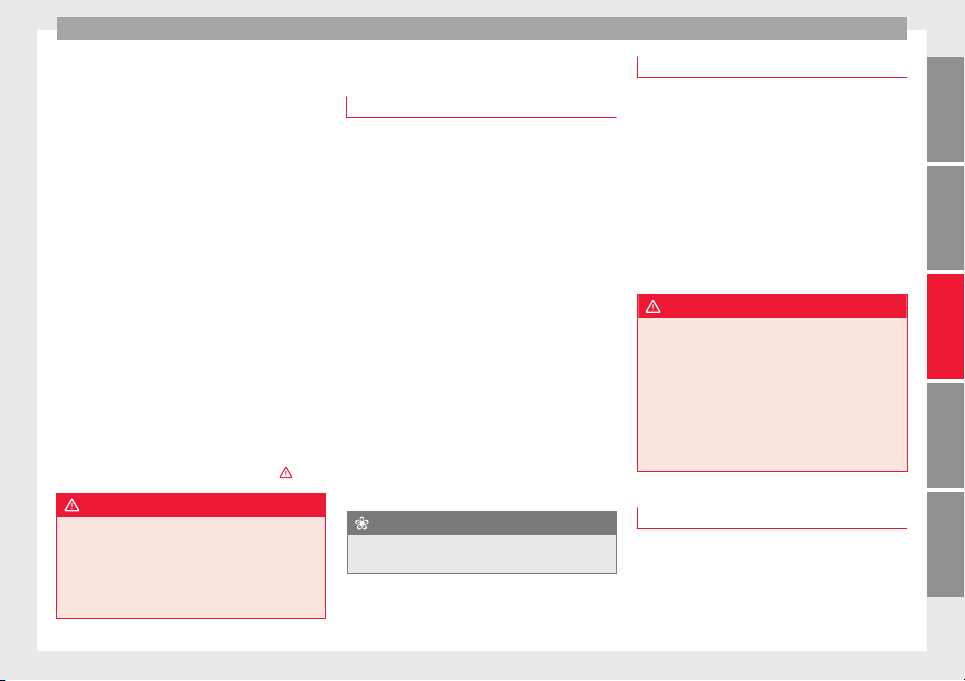Loading ...
Loading ...
Loading ...

Driving
Deactivating the steering lock
●
Turn the steering wheel slightly to release
the loc
k.
●
In
ser
t the key in the ignition lock.
●
Hold the steering wheel in this position
and switch on the ignition.
Electromechanical steering
In vehicles with electromechanical steering,
the assisted steering function automatically
adjusts according to vehicle speed, steering
wheel torque and wheel orientation. The
power steering only works when the engine
is running.
You should take into account that you will
need considerably more power than normal
to steer the vehicle if the power steering is
not working correctly or at all.
Power-assisted steering
Power-assisted steering helps the driver in
critical situations. In counter-steering, it as-
sists by applying additional torque ›››
.
WARNING
Power-assisted steering, together with the
ESC, helps
the driver to control vehicle steer-
ing in critical situations. However, the driver
is ultimately responsible for steering the ve-
hicle at all times. Power-assisted steering
does not remove this responsibility.
Run-in and economical driving
R
u
nnin
g in a new engine
The engine needs to be run-in over the first
1500 km (900 mile
s).
For the first 1,000 kilometres (600 miles)
–
Do not drive at speeds of more than 2/3
the maximum speed.
–
Do not accelerate hard.
–
Avoid high engine revolutions.
–
Do not tow a trailer.
From 1,000 ki
lometres (600 miles) to 1,500
kilometres (900 miles)
–
Speeds can be gradually increased to the
maximum road speed or maximum permis-
sible engine speed (rpm).
During its first few hours of running, the in-
ternal friction in the engine is greater than
later on, when all the moving parts have bed-
ded in.
For the sake of the environment
If the engine is run in gently, its life will be in-
cre
ased and its oil consumption reduced.
Running in tyres and brake pads
New tyres should be run in carefully for the
first
500 km (300 miles) and new brake pads
should be run in carefully for the first 200 km
(125 miles).
During the first 200 km (125 miles) you have
to compensate for the reduced braking effect
by applying more pressure to the brake ped-
al. In case of a sharp braking, the braking
distance will be longer with new brake pads
than with brake pads which have been run-
in.
WARNING
●
At firs
t, new tyres do not give maximum
grip, and require running-in. This may cause
an accident. Drive particularly carefully in the
first 500 km (300 miles).
●
New brake pads must be “run in” and do
not have the correct friction properties during
the first 200 km (125 miles). However, the re-
duced braking capacity may be compensated
by pressing on the brake pedal a little harder.
Environmental compatibility
Environmental protection is a top priority in
the de
s
ign, c
hoice of materials and manufac-
ture of your new SEAT.
»
199
Technical dataAdviceOperationEmergenciesSafety
Loading ...
Loading ...
Loading ...